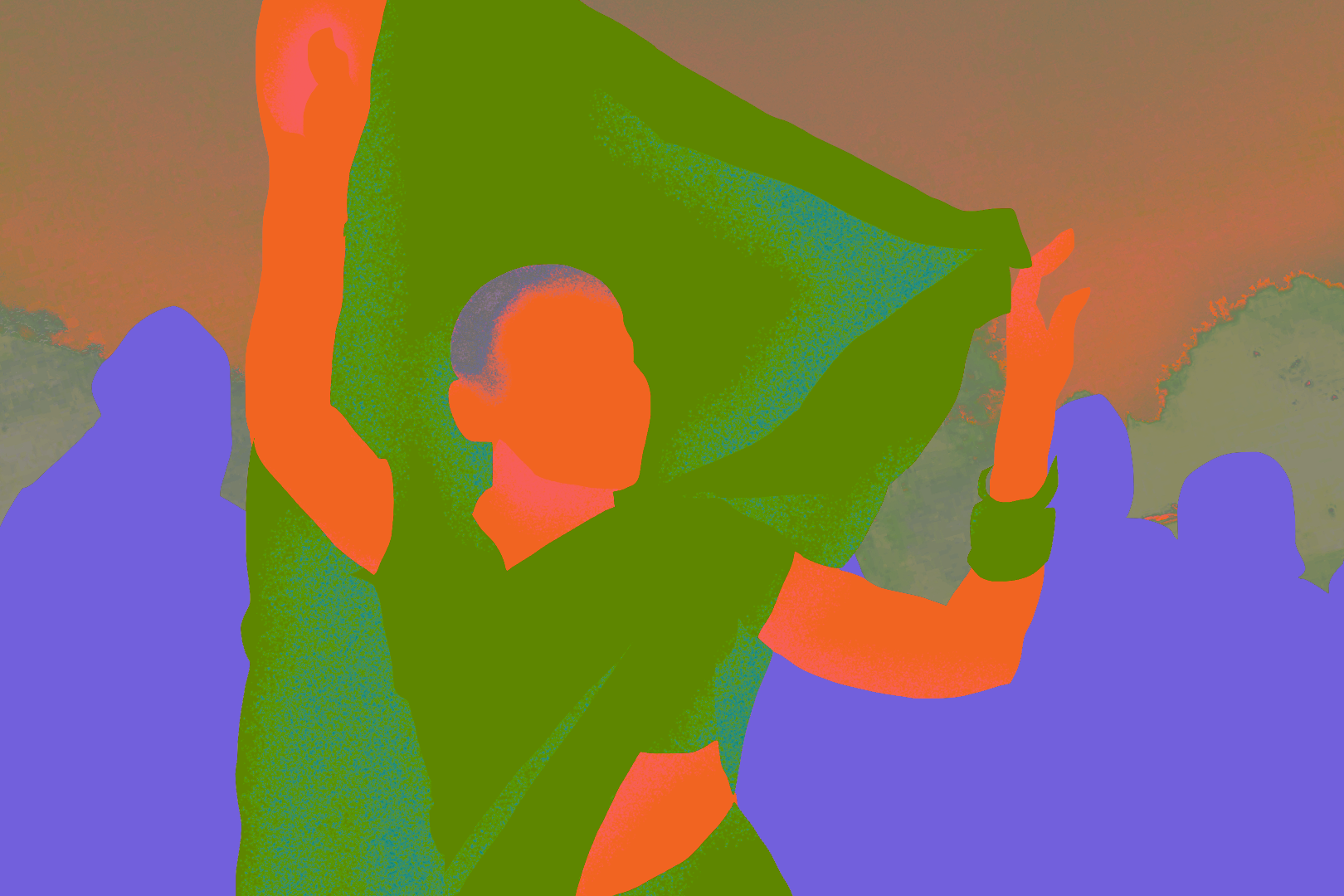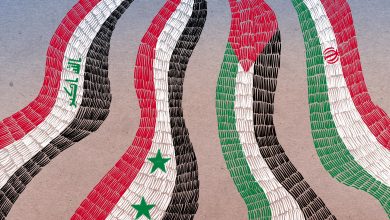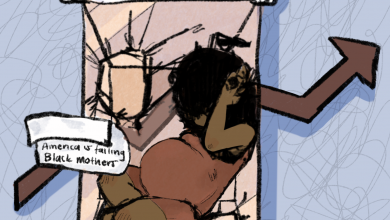Gender Identity In South Asia: Who Are the Hijra?

Design by Lauren Cramer
Image Description: Illustration of a Hijra individual dancing, wearing a vibrant green sari. They are in front of other people, outlined in bright purple, on an orange and green background.
The fight for LGBTQ+ liberation is slowly making its way to the spotlight in South Asia. At the center of this movement for years, have been Hijra, a group typically self-classified as the third gender, including transgender, intersex, and non-binary individuals. While current discussion around dismantling the gender binary primarily exists in the Euro-American world, Hijra have established their spaces in South Asian communities for thousands of years.
Hijra were first mentioned in the ancient Hindu folklore of Ramayana, in which Lord Rama dismissed the men and women of Ayodhya before he was exiled for 14 years. When he returned, a group of people remained after his exile that were neither man nor woman: these people were called Hijra. Hijra has since held importance in Hinduism, as ancient scripts such as the Kama Sutra were among the first to discuss the diverse gender identities and sexual orientations celebrated in pre-colonial occupation of South Asian civilizations. It was believed that Hijra had the religious authority to bless and curse others; they often attended weddings and birth ceremonies or performed at temple rituals (and still do today).
The British occupation and colonization of South Asia in the 19th and 20th century completely shifted the social perception of the Hijra community. British officials viewed Hijra as ungovernable, stating they were “a danger to public morals” and “a threat to colonial political authority.” The passing of the Criminal Tribes Act of 1871 classified several underprivileged groups, such as lower caste identifications or hunting/vagrant tribes, as criminal by nature and restricted many of their rights and actions, keeping them under legal surveillance and alienating them from other citizens. Despite India’s independence in 1947 repealing this legislation, Hijra were made societal outcasts, becoming victims of wide-spread discrimination in the South Asian countries of India, Pakistan, and Bangladesh.
One example of the portrayal of negative stigmas against Hijra in South Asian society is in popular media. In Bollywood films, Hijra are typically reduced to objects of mockery or criminal nature and played by cisgender male actors rather than members of the Hijra community. In the movie “Sadak” directed by Mahesh Bhatt, the canonical Hijra character, Maharani, is depicted as an antagonist brothel-owner who is a predator of young girls, further perpetuating the colonial stereotype placed on the community of being evil. It is a common occurrence in films and other forms of mainstream media for male actors to cross-dress as women for comedic purposes, mimicking heavy makeup, vibrant saris, and feminine mannerisms. These offensive portrayals are typically based on mocking stereotypes of Hijra, therefore invalidating their identities. Among some of these roles, unfortunately, are notable actors such as Ajay Devgan in “Golmaal Returns,” Shah Rukh Khan in “Duplicate,” Saif Ali Khan in “Humshakals,” and many more.
In addition to social prejudice and stigmatization that led families and communities to shun them, Hijra face systemic oppression in the workplace, often preventing them from receiving legal employment. As a result, most people in the Hijra community are unable to make ends meet by solely performing at temples and ceremonies, and take part in some form of begging or sex work, both of which are illegal in many South Asian countries. Because of their public mistreatment, most Hijra live within their own communities, called “ghanaras” in networks of families led by a Guru, an older Hijra who serves as a mentor. The guru typically takes a significant percentage of their disciples’ earnings, despite the majority of Hijra being trapped in poverty.
Since being formally recognized as the third gender in 2014 by the Indian Supreme Court, the Hijra community has made significant legislative progress in South Asia. In 2018, Pakistan passed the Transgender Persons (Protection of Rights) Acts following India, Bangladesh, and Nepal’s decision to allow citizens to choose their gender identity and be recognized on federal documentation. These laws include government accommodation, eligibility for welfare, schooling, and protective measures and rights that prohibit discrimination or violence against Hijra and transgender individuals. In addition to these laws, India has legally granted the right to undergo gender affirming surgeries in government hospitals. In the past, many Hijra community members have died while undergoing illegal castrations, called “Nirvan,” in unsafe conditions as a ritual offering to Bahuchara Mata, the Hindu goddess of fertility. However, individuals are only currently legally recognized and protected as long as they can provide documentation of gender affirming surgery, unfairly dismissing transgender or Hijra individuals who have not or choose not to receive the operation.
While the Hijra and transgender communities have contributed to the LGBTQ+ movement in South Asia through their lived histories and experiences, more work is to be done in order to dismantle the cisgender, heteronormative, and patriarchal legacies in South Asia and for gender liberation at the social and political level. South Asia must take larger steps towards more inclusive representation and allowing non-heteronormative people to be present in spaces that have excluded them, to decolonize the systemic damage that binary Euro-American gender standards have inflicted on the Hijra community during and after the British occupation.




